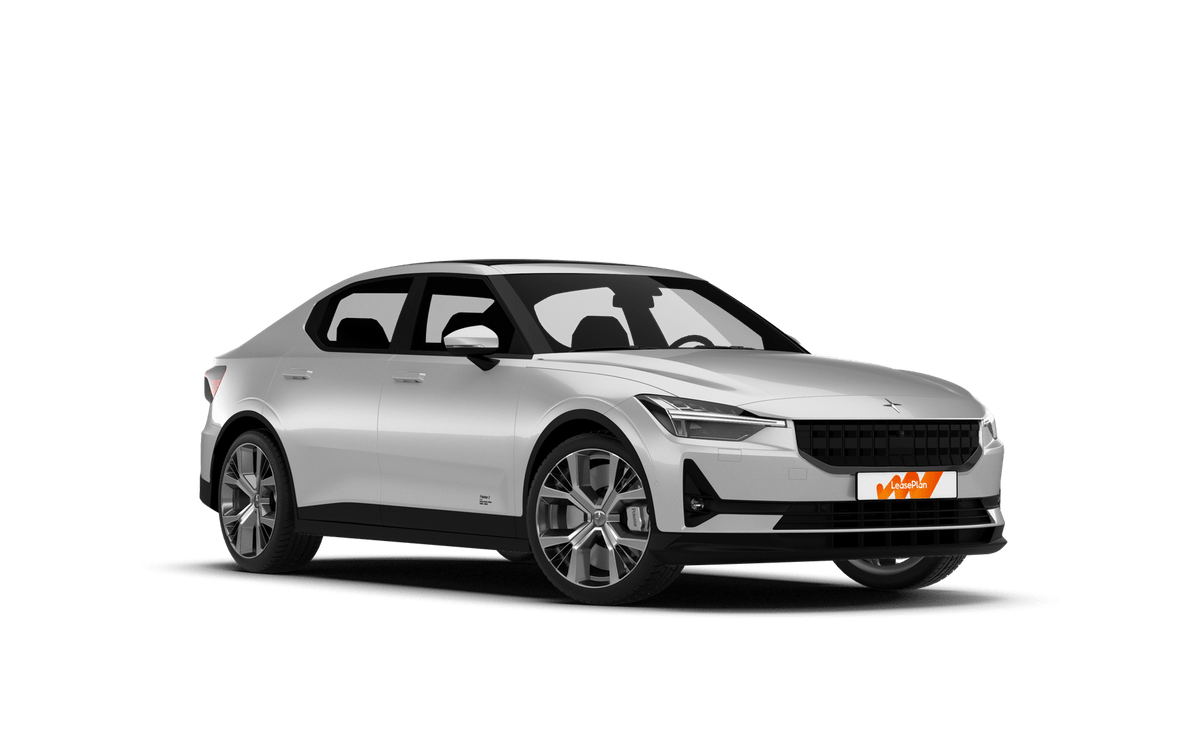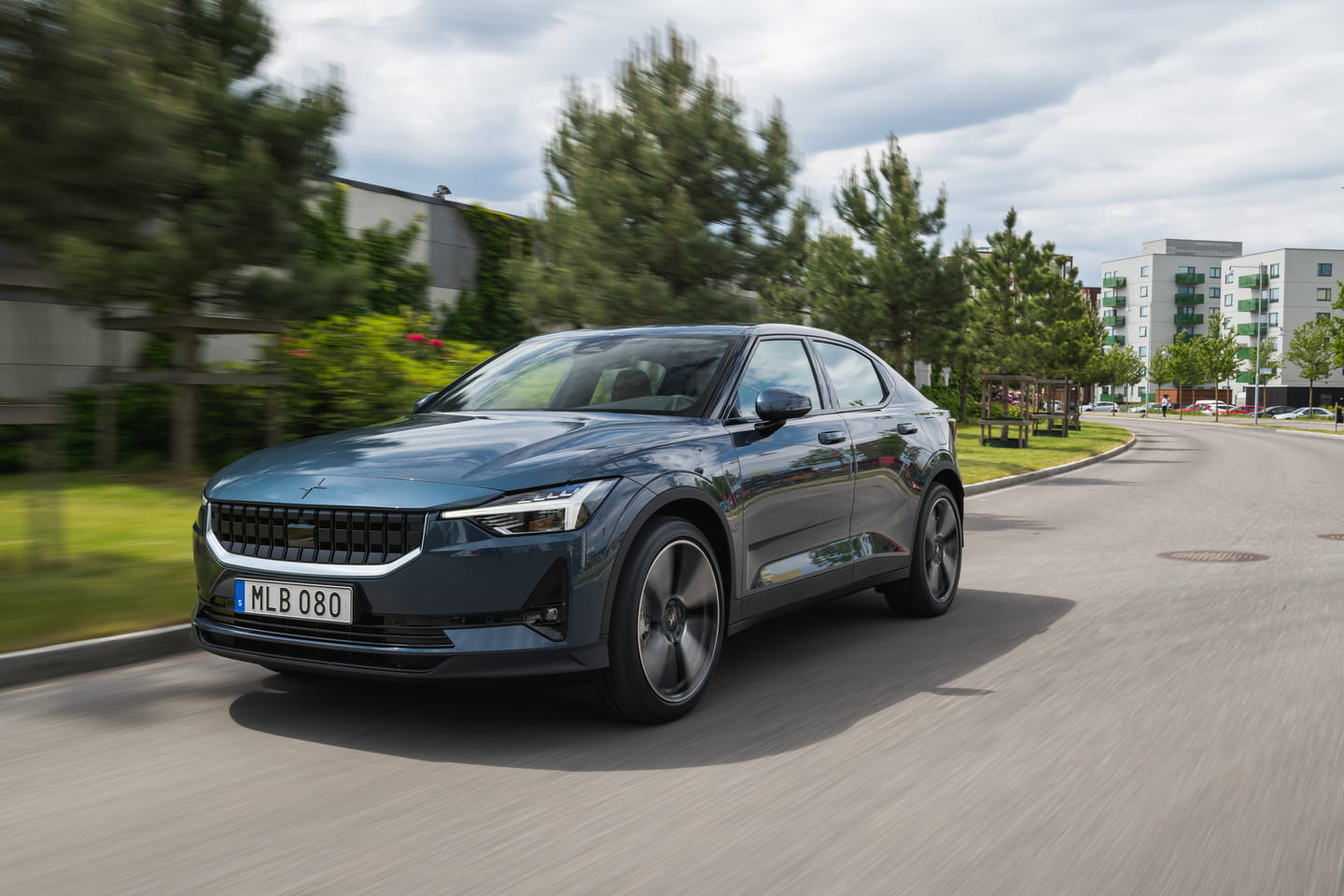
Car review – Polestar 2
Serious Tesla competitor
Thanks to its Volvo background, the Polestar 2 can be taken (much) more seriously than the Tesla Model 3, yet there’s still plenty of sensory and digital enjoyment to be had.
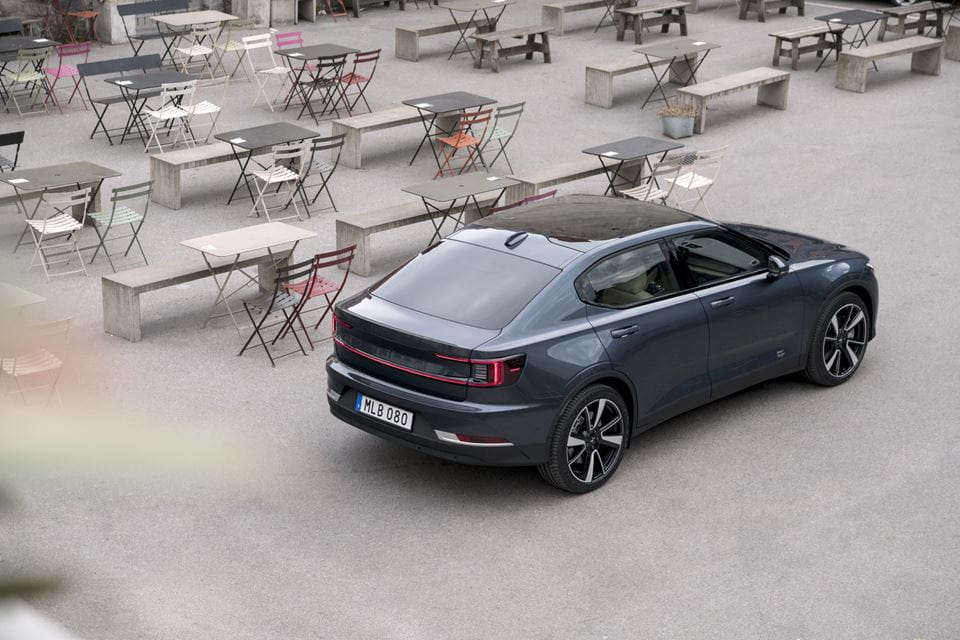
Simple and practical
Polestar's motto is ‘less is more’. This comes across in all areas, starting with the design. However, it’s not love at first sight for everyone, probably because of its somewhat raised ground clearance and its unusual lines casting a seed of doubt.
It is something between a sporty hatchback and a crossover, which also makes it quite a practical and spacious car. For example, in contrast to the Tesla Model 3 it has a real tailgate that is cut wide and gives you access to 405 litres of boot space. In the frunk you have another 35 litres for storing small items or the charging cables.
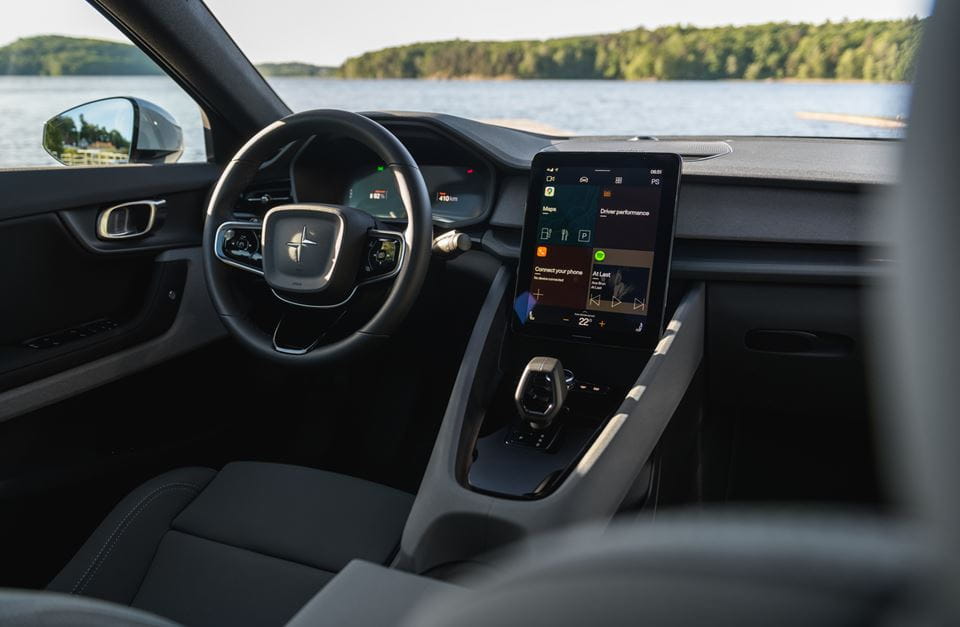
Impressive infotainment
Swing open the sturdy driver's door and you’ll immediately spot a large vertical tablet in the centre of the dashboard, which otherwise has a simple, sleek design. You can unlock the door with your smartphone and you don't need a key to start the engine either.
The brain of the infotainment system comes from Google: this Polestar is one of the first cars to use the so-called Android Automotive OS, which proves to be very powerful, fast and above all user-friendly. The tablet is divided into four tiles, one for each function, ranging from calling and media to vehicle data to navigation.
Navigation is of course via Google Maps. The maps are crystal clear, dynamic and information-rich. You can quickly zoom in and out using two fingers, and the maps also give you a clear overview of the route and your range with the current battery charge.
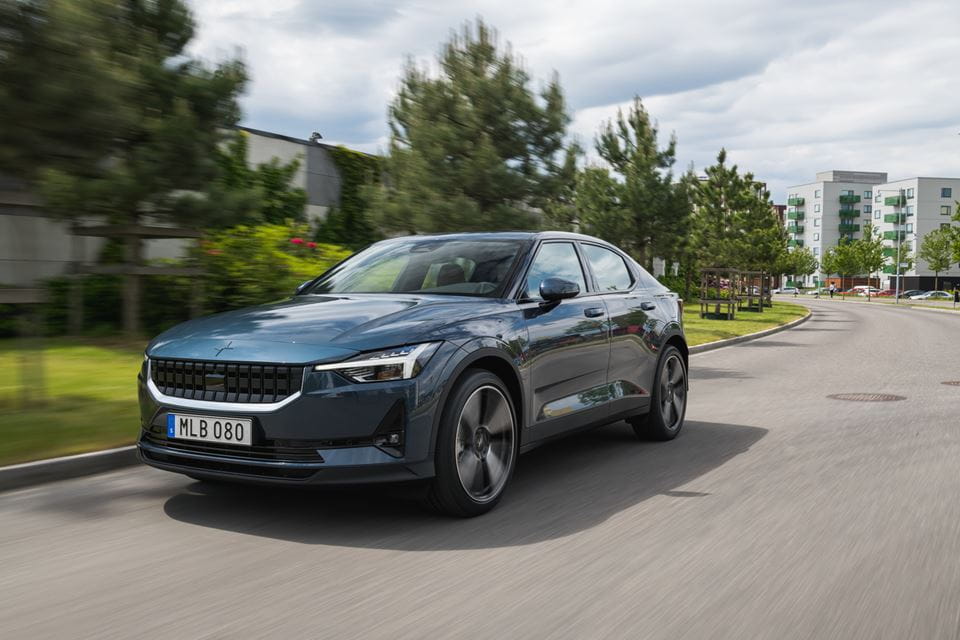
Unfazed
Driving this Polestar is a real pleasure. As soon as you up your speed, it doesn’t let anything hold it back. It inspires a lot of confidence, especially when cornering fast. The four-wheel drive and the low centre of gravity play their part too.
Add to that razor-sharp steering and adjustable regenerative braking and you get a real driver’s car. As for the acceleration, there's not much to say other than that it’s impressive, as in any powerful electric car.
Daily driver
The Polestar 2 lends itself perfectly to everyday use. Thanks to the 78kWh battery, it offers a range of 470 km according to the WLTP cycle. Our test car used an average of 23 kWh/100 km, so in practice you will want to start looking for a charging station after about 300 km.
The standard on-board charger can process 11 kW so allow around seven hours to charge it fully from almost empty. It can get 150 kW from a DC fast charger, which equates to just under half an hour to charge from 10 to 80%. Unfortunately, the Volvo group isn’t (yet) a member of the Ionity network so you don’t get any preferential rates there.
All-in price
At Polestar, less is more also means that the number of versions is limited. The basic version already gives you a really well-equipped car that you can add a performance pack to, and that’s pretty much it. There is also less choice when it comes to colours and upholstery than with the premium brand competitors.
What you do get with Polestar is a three-year data plan to run all the connected services, as well as free maintenance for the first three years or 50,000 km – including pick-up and delivery. It doesn’t get much easier than this.

